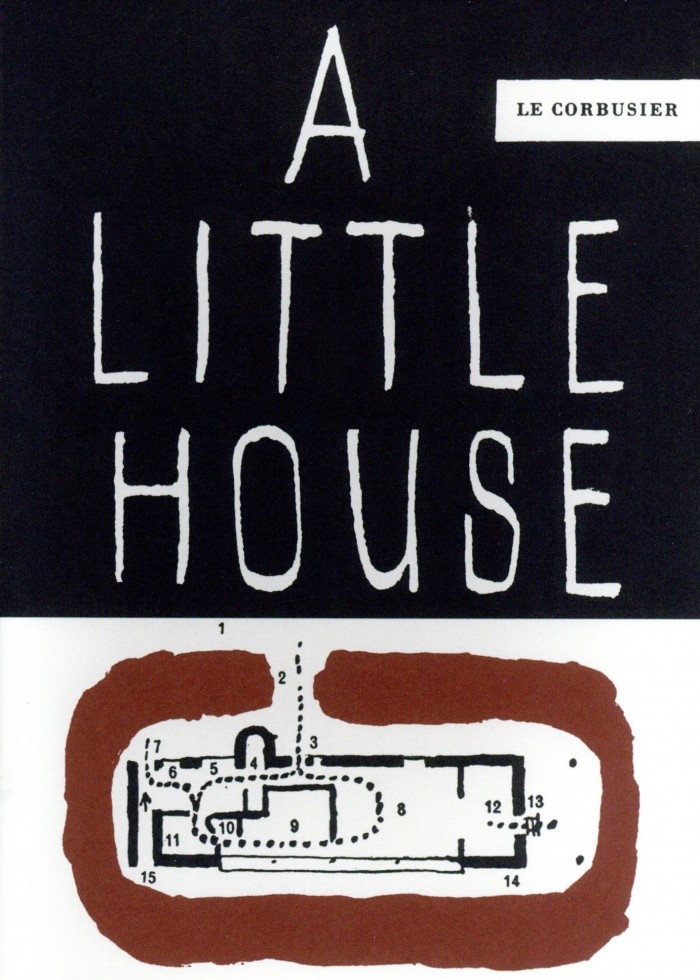A Little House
A Little HouseLe CorbusierBirkhäuser, March 2020 (New Edition)Paperback | 4-3/4 x 6-1/4 inches | 100 pages | 72 illustrations | English | ISBN: 978-3035620665 | $34.99PUBLISHER'S DESCRIPTION: Villa le Lac, which was designated a World Heritage in 2016, was designed and built by Le Corbusier as Geneva lakeside home for his parents in 1925. Because of its spare arrangement of spaces, he referred to it as a “dwelling machine.” Even today it remains the modern prototype of the “small house” that fulfills all of the functions of a residence with a minimum of floor area and seamless transitions between spaces. For the first time, this book is appearing in three separate language editions, following the original edition in which Le Corbusier documented the history of the building: with photographs, sketches and a poetic text. Access to the original photographs allowed the quality of the illustrations in this edition to be improved significantly. REFERRAL LINKS: dDAB COMMENTARY: Of the nearly 50 books that Le Corbusier produced in his lifetime, two were devoted to individual buildings, both comprising the Les Carnets de la Recherche Patiente imprint of publisher Editions Girsberger. The first book, Une Petite Maison, was devoted to the small house he designed with Pierre Jeanneret for Le Corbusier's parents and built on the shores of Lake Geneva in 1925; the second was about the Chapel at Ronchamp, which Corbu was working on when the first book was released in 1954. Given that A Little House was published three decades after it was built, it is a reflective book, with Le Corbusier writing about his intentions but also revealing how the house fared over the years. The book also includes some drawings that Le Corbusier made in 1945 of the house and his mother, who lived there until her death in 1960. This book on a small house is appropriately small, at just 84 pages and pocket-sized (the reprint from Birkhäuser has 100 pages, with explanatory text at the back by Guillemette Morel Journel). It has five chapters, starting with "A Little House" and then moving quickly to "The Little House"; the first chapter, accompanied by sketches, illustrates how Le Corbusier designed the house as a modern ideal before there was a site, while the second chapter, full of b/w photographs, is all about the real thing. The text is short, basically serving as captions to the photos and moving through the house like a guided tour. The other three chapters recount the technical issues that arose with the cracks in the walls and how the trees fared over the years; include the architect's war-era sketches; and points out how the local jurisdiction forbade modern dwellings after the "crime" of this little house. Coming to the fore throughout the book is the 33-foot-wide ribbon window on the south facade overlooking the lake. This feature, evident even in the floor plan that is placed on the cover, is echoed in just about every house by Le Corbusier during the 1920s. But given the small, roughly 500-sf size of the house, the window is of the utmost importance, spanning the living room and bedroom, framing a view, and bringing in plenty of sunlight. Corbu famously wrote of this little house as "a true machine for living" but also as "the plan of a house in search of a plot of ground." Clearly house and site fused together into "a little gem of ingenuity and functionalism" — one that now anyone can visit. SPREADS:

A Little House
Le Corbusier
Birkhäuser, March 2020 (New Edition)
Paperback | 4-3/4 x 6-1/4 inches | 100 pages | 72 illustrations | English | ISBN: 978-3035620665 | $34.99
PUBLISHER'S DESCRIPTION:
SPREADS:










